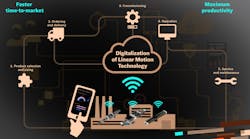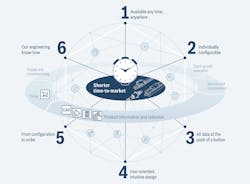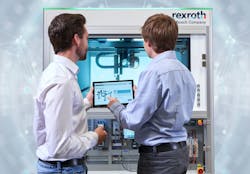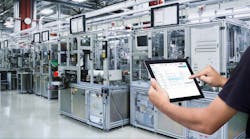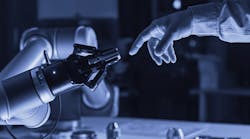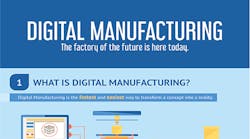Latest from Industry Trends
If linear motion technology is featured in your factory, it’s likely that it plays a largely mechanical role in your production processes. But as digital technology continues to evolve, linear motion technology is starting to play an increasingly important role in the factory of the future.
Linear motion technology solutions of the future can enable manufacturers to capture data, optimize processes, and predict wear sooner and with greater accuracy than ever before. Because of this, it is important that machine manufacturers, service providers, and users do not have to do any programming or integration themselves. Rather, they simply use the integrated measuring functions in the linear motion technology for analyses.
Far from being a basic mechanical technology, linear motion technology is poised to transform the modern manufacturing environment over the next several years. Key points in the manufacturing process chain are subject to change, including configuration, ordering, commissioning, operation, diagnostics, and maintenance.
The flexibility of digital linear motion technology allows for maximum productivity, improved configuration, and shorter time-to-market. This is because of all the software tools, online services, intelligent systems, and integrated sensors available today. For example, the following presents five key benefits of linear motion technology in the digital future.
1. Product Selection and Sizing
Using seamless engineering e-tools, linear motion product selection and sizing is easier. Engineers no longer have to flip through extensive catalogs or manually look up part numbers because it can now be done conveniently online. These same tools will enable users to select and configure components and, as a next step, include multi-axis systems with speed and simplicity. To ensure reliability, a digital twin for virtual environments will accompany the components and systems in the future to provide accurate simulations.
2. Ordering and Delivering
Automated ordering and delivery processes mean that providers can receive, commission systems, and dispatch orders almost immediately. The digitalization of linear motion technology means both faster commissioning and increased delivery. Digital platforms enable easy product ordering at the click of a mouse. To ensure customers are kept in up-to-date throughout the entire order process, order tracking will be made available throughout the entire process for the user’s peace of mind.
3. Commissioning
In the future, all system data will be readily available for commissioning—including all axis data. Users benefit from a plug-and-play commissioning process without having to input data or correct source errors. In the digital future, the axis parameters can be stored digitally in different products. Whether in a motor encoder, integrated measuring system, or digital nameplate, the axis parameters will always be available. The relevant parameters will be transmitted to the drive system, saving time and minimizing errors during start-up and maintenance.
4. Operation
In the future, key data for the machine will be picked up by integrated sensors and passed on to cloud services during operation. As digital technology continues to transform the way we work, sensors will permanently determine all operating and environmental data such as temperature or vibrations. The sensors can be integrated, for example, in screw drives. Or they can be attached externally to the axes and connected via open interfaces. Machine availability, quality, efficiency, and other such key information will flow into Overall Equipment Effectiveness (OEE) data in real time to ensure everyone is always well informed—wherever they are—and able to react quickly.
5. Service and Maintenance
By evaluating sensor data, companies will be able to see future indications of necessary maintenance and service tasks. Enhanced service and maintenance will be a key part of the future of linear motion technology. These advanced services will evaluate the data pulled from machine operation and explain what maintenance, servicing, and spare parts are required to prevent unwanted downtime. As a result, manufacturing equipment and processes will be able to function at their most efficiently.
Conclusion
For today and in the years to come, the digitalization of linear motion technology will enable you to increase the productivity and flexibility of day-to-day operations. The digital journey of linear motion technology has long since begun—and it will be able to increase productivity over the entire life cycle.
Volker Desch, is director of sales for Linear Technologies, Bosch Rexroth Corporation. Patric Brand is product manager of Linear Motion Technology, Bosch Rexroth AG.










